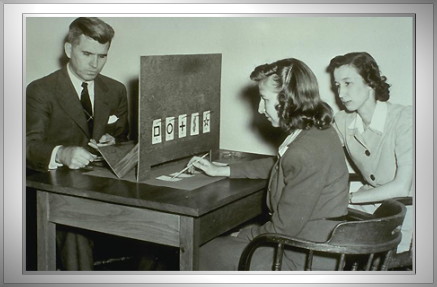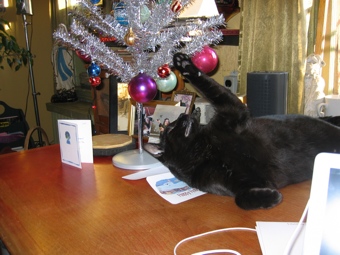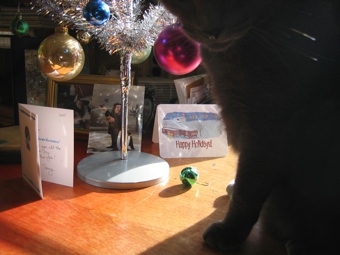There was a number of things that were cut from my piece about the Sodder family to get it down to eight minutes. I’m posting some of it here, and then some comments, for people who are well acquainted with the Sodder story. For those of you not acquainted with the story, none of this will make any sense to you, and you might as well skip this post.
All the newspaper stories in the past seem to be weighted towards the conclusion that the children did not die in the fire. But I found just as much information to indicate that they did. I can see how that happened, though. When I put this story together, after meeting the family, every piece of evidence I found that pointed towards the children’s deaths felt like a betrayal. Who wants to insist the children are dead? I hate saying anything that might remove hope. If 60 years later I am having trouble pointing out anything that might indicate that the children died that night, I can imagine the reluctance of people who had to look George Sodder in the face.
However, even though I think they died in the fire, there is enough genuine weirdness about this whole thing, and a couple of things that were not adequately investigated, that if someday it is learned that the children did not die in the fire I won’t be shocked. But weirdness does not necessarily equal murder, and I don’t think that’s what happened.
I found out all sorts of things, like the fact that some remains were found on Christmas morning (although the family says they were never told this) and also that the oldest son John said he went in and shook his brothers and sisters. The family says he said that out of guilt, because he felt that’s what he should have done, which absolutely could be true. But it could also be true that he did exactly what he said he did.
Here are some sections that were cut from my piece. I talked to a number of fire professionals in Fayettevile (and I talked to a friend in the FDNY before I interviewed them). They all felt it was likely the children died first.
STERLING LEWIS: If it got in the walls, it could literally have traveled straight up, what we call chimney and go straight into the top floor and not even burn the 1st floor. Start in the basement and go to the 3rd floor. Cause fire will jump like that.
Very few individuals burn to death, they’re always dead prior to the fire getting there due to smoke inhalation.
HORN: Why did the two oldest boys make it downstairs and none of the others? Is it possible that some of the children succumbed to smoke inhalation but two didn’t?
STERLING LEWIS. Absolutely. We get that all the time. We’ll find individuals laying in bed, dead, and then we’ll find another individual that’s laying a foot from the door. I mean they were going to get out.
HORN: The family also bring up the fact that they never smelled burning flesh. But Lewis explains that no one would have been standing downwind from a fully involved fire. [And according to witnesses, it was a very windy night.]
[About the Fire Department not arriving until the next morning.]
HORN: It wouldn’t have mattered even if they had arrived. Sterling Lewis, West Virginia State Fire Marshall.
STERLING LEWIS: Let’s just say it takes a ten minute drive from the firehouse to the fire, there were no such things as our self contained breathing apparatus, there would have been no entry into that house by a firefighter. So therefore there would have been no rescue. [However, every fire professional I spoke to said they still would have shown up, regardless. Not one of them were trying to excuse Morris. I want to be clear about that.]
HORN: Finally, the one fact that everyone comes back to: little remains were found the next day. And what little was found was internal organs and that just seems, well, weird. [The family was never told that any remains were found, but the State Fire Marshall interviewed everyone who was on site the next morning and four people reported seeing remains, including one of Jennie Sodder’s brothers and a local priest. Whether or not they were being truthful, I cannot say.]
STERLING LEWIS: In a fire, when the rest of the body is absolutely almost destroyed, whatever would be left of entrails a lot of times will turn just a beautiful shade of red. And that’s what we look for because then your black and your grays of all the char and everything, this red it jumps out at you.
HORN: All the experts the family consulted agree that more remains would have been found from a fire that only burned for 45 minutes before the roof fell into the basement. But the fire didn’t burn for 45 minutes. It burned all night long and into the next morning. When the fire department did finally appear it was still hot and they had to water the site down before conducting their search. Further, two hours is not even close to a thorough search. Today the search would take days and possibly weeks.
[It wasn’t that the remains were not there, necessarily, but they might have been missed by people who weren’t professionals, and who didn’t search for very long. The search that took place in 1949 sounded even less methodical. At this point, any remains would have been buried under four or five feet of dirt for four years, and a real search would need to be even more painstaking and would take even longer, now we’re talking months.]
The scene was not roped off and guarded, while they weren’t searching. That would never happen today. And because George Sodder bulldozed dirt into it, the scene is was contaminated.
SGT. MIKE SPRADLIN: … the authorities had no way of knowing if it had been dug and bones planted or bones taken out.
[The family says George filled in the basement because he felt no one was ever coming back. I can totally see him doing this out of grief and frustration. It is understandable.]
HORN: The family held onto a statement made by Ida Crutchfield, who ran a small hotel in Charleston, West Virginia. In 1952, seven years after the fire, she claimed she saw the children a week after the fire. She’d never met the Sodder children, she had only seen their pictures in the paper two years after the fire. Not a credible witness.
SGT. SPRADLIN: For them to be carried out of that house and held against their will for that many years is implausible, because they could have easily escaped their captors. They’ve grown up, had children of their own, and for them never to try to contact the family is just, I just don’t buy that. From my reviewing of the report there was really no stone left unturned, they tried to find those children if they existed and it was just those children were never located.
BRAGG: There was a guy that committed a theft while the house was burning, he was stealing from one of their out buildings while they were trying to save their children. Now what kind of person would do that? That is just absolutely … that adds to the mystery of this story 100 percent. It’s just crazy to me.
HORN: But it’s not likely that someone would kidnap the children and then come back and steal some block and tackle, the objects that he confessed to taking. He also said he cut the phone wires, that were indeed cut that night. No one believed him because the phone wires were cut at the top of the phone pole. But that might explain why on the night of the fire, George Sodder never found the ladder that was always leaning at the side of the house. It was used to cut the wires.
HORN: The police also never adequately investigated a man who made threats to the Sodder family before the fire, and who stood to gain financially, from the fire.
[This is Janutolo. But this points to possible arson, not kidnapping, and that’s one area I still have to investigate. From what I was told about him, he was not in need of money, was liked and respected in the community.]
HORN: But even George Bragg, who researched this case and who doesn’t believe the children died in the fire, concedes that some parts of the story indicates that they did. In the police report, the Sodder’s oldest son John said he woke the children.
BRAGG: It has been my experience when dealing with police reports and interviews after something like this happens, the first response by the person you are talking to is usually the most truthful, and that was his very first response. He told the state police that he walked into the room and shook the children and told them to come on downstairs, and to me that’s the one thing that I cannot understand. That would indicate that those children were in that bedroom.
HORN: The family believes John said that because he felt that was what he should have done. Perhaps he was not the only questioning his actions.
SPRADLIN: Survivor guilt plays into it. The adults get out of the house and the children don’t … I’d always be second guessing myself, maybe I could have done more and more and more … I’d want to believe that someone else was responsible and those children were alive and being held somewhere …
STEVE CROOKSHANKS: I’ve rarely seen a family that had a tragedy like that that did not want to believe, it’s a psychological thing, you want to believe that something caused this to happen. This just couldn’t have been a natural event.
SPRADLIN: It’s similar to suicides … it’s a suicide until a year and a half afterwards, then to the family’s way of looking at it it turns unto a murder … even though they may agree with it for the first year and a half, two years, then all of sudden it hard for them to accept those type of situations.
Those are the cuts I thought people who follow the case might be interested in.
There were all sorts of things I was able to find out that I didn’t use because I knew in the end that the piece had to be 8 minutes.. I’m trying to remember now. The caller who made the wrong number was found by the police and questioned. She was just a neighbor who made a wrong number.
The guy who stole the block and tackle was arrested and paid a fine.
About John Sodder shaking his brothers and sisters. It’s perhaps meaningful that John was the one child who never wanted to talk about the fire, and thought they should just let it die.
The fire wasn’t aggressively investigated at first because everyone was satisfied that they died in the fire. Once it became clear that the family thought the children were still alive, the State Police and the Fire Marshall did investigate. Every theory that was brought forth that could be investigated was investigated, as was every lead, except at this point I can’t tell if they thoroughly investigated Janutolo. They may have, but I haven’t confirmed it yet. But the Sodder family didn’t make a lot of noise about Janutolo, and since they didn’t hesitate to make their objections known, that seems to indicate they too were satisfied that either Janutolo was not involved or that he was satisfactorily investigated. But still, he was the one person who had a motive (for arson, not kidnapping) and his name should have been all over the files and it wasn’t.
The cut phone wires were never adequately explained. It’s not that they didn’t try, but short of an eye witness, there was no way to know what happened. But it’s another fact that points to a possible crime.
I also found that according to the police and FBI records, at one point the Sodders thought one of Jennie’s brothers had the children in Florida and her own relatives were investigated, and they had to prove their children were their own. (Given that law enforcement professionals agree that if the children were removed from the house that night, either family or friends or relatives of the family were involved, it makes some sense.)
Fire Chief Morris was the one who was told to take care of the remains that were found on Christmas morning. I question the judgement of the fire marshall about leaving something so important in the hands of a volunteer, but I think Morris’s story about reverently burying the remains was possibly a story he made up to cover up the fact that he threw the remains away or just left them there. Then, when George Sodder asked him to show him where he buried them, Morris buried the beef liver so that there’d be something to dig up.
No physical evidence survives to this day, and the scene of the fire was contaminated (as dramatically demonstrated at the 1949 dig) when Mr. Sodder bulldozed the site, so I’m not sure what an excavation would accomplish today, although it couldn’t hurt, I guess. But, as Spradlin points out, since anyone could have removed the bones, or put bones in, it’s not likely to resolve anything one way or another. If the family wants to pursue this option, Spradlin explained, they would need to speak to the prosecutor’s office, although it might be hard to convince them to proceed since the site is contaminated. Again, I personally understand Mr. Sodder’s actions, I do not mean to sound critical, but nonetheless, it did contaminate the scene. (A lawyer could advise them here.)
Most of the people I wanted to talk to are no longer with us, so there is still no way to definitively say what happened that night. People can and probably will going on believing whatever they want.
I want to stress that although I believe the children died that night, I have no way of knowing what really happened. I am sorry if bringing up any of these new facts is hurtful. I could be absolutely wrong wrong wrong, and I am open to people pointing out where I am wrong.
My blog has a comment section, so if anyone, and especially members of the family, want to contest anything I have said, or simply respond, please feel free to do so. The new facts are open to interpretation, and my way of looking at them is only my opinion. As I’ve said before, the facts will not add up the same way for everyone.





